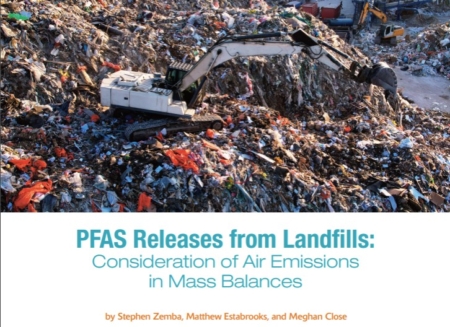The EPA has been busy in the first quarter moving forward with additional regulatory proposals for PFAS as we wait for the PFAS MCLs to be finalized. Meanwhile, UCMR5 sampling continues which is focused on 39 PFAS in large public water systems throughout the U.S.
First, we present the status of PFAS MCLs. The general consensus we hear is the final PFAS MCLs are anticipated by the end of April 2024. Supporting this understanding, Maine DEP Commissioner, Melanie Loyzim, during a February 1, 2024 E2 Tech Event in Augusta, Maine, shared that the EPA had indicated an April announcement and that there would not be significant changes from the draft proposal.
The EPA announced a proposal on February 8, 2024 adding nine PFAS (PFOA, PFOS, PFBS, Gen X, PFNA, PFHxS, PFDA, PFHxA, and PFBA) to the RCRA list of hazardous constituents. The public comment period is open until April 8, 2024. In the proposed rule, the EPA has concluded that review and evaluation of “key toxicity and epidemiological studies and assessments” for these nine PFAS, their salts, and their structural isomers meet the threshold for listing as RCRA hazardous constituents. If finalized, this rule change would require PFAS to be among the hazardous constituents considered in RCRA facility assessments, and “further investigation and cleanup through the RCRA corrective action process” which likely signals additional required response actions at RCRA sites in the near future. Toxicity data to assess these compounds has been added to the EPA’s Regional Screening Level tables, so they will increasingly be included in remedial investigations and risk assessments.
In January 2024, the EPA presented new requirements for the TSCA Section 8(a)(7) Rule related to PFAS reporting and recordkeeping. The rule requires manufacturers and importers (current or past) of PFAS or PFAS-containing products since January 1, 2011 to report information electronically related to PFAS uses, production volumes, disposal, exposures, and hazards. Key take aways include:
- Fluoropolymers may meet the scope of PFAS under the rule;
- There are no exemptions for reporting under the rule including no minimum volume or concentration;
- There is no testing or monitoring requirement associated with this rule;
- Entities (“particularly article importers”) without knowledge or that cannot “reasonably ascertain” presence of PFAS do not need to report. Recommended to document due diligence completed for this determination.
Determining compliance with this rule may present challenges based on changes in PFAS identification in Safety Data Sheets (SDSs) that have evolved since 2011. The EPA announced on February 8, 2024 proposed changes to “amend the definition of hazardous waste as it applies to corrective action to address releases from solid waste management units.” In this proposal, the EPA provides clear regulatory authority to address emerging contaminants that are otherwise not covered by the current definition of hazardous waste. The comment period for this proposal is March 26, 2024.
The EPA released Method OTM-50 in January 2024, a second method to measure PFAS in stack emissions. OTM-50 focuses on short-chain non-polar compounds (such as CF4) that might result from incomplete combustion of long-chain polar compounds (such as PFOA and PFOS), which OTM-45 is designed to measure. Availability of these test methods provides options to regulatory agencies to request PFAS testing at air emissions sources.
Finally, the EPA has continued to provide quarterly updates on data received to date for the UCMR5 sampling program which is focused on PFAS (39 PFAS and Lithium are the 40 substances being analyzed in water systems with 10,000 customers or more nationwide). Preliminary review of the early data, (24% complete), indicates that PFOA and PFOS have a low detection frequency above the proposed MCLs (4 ng/L or ppt) at less than 13% of public water systems (PWS). In addition, Gen X and PFBS were generally not detected above their reference concentrations (current health advisories of 10 and 2,000 ppt, respectively) except for one detection of Gen X (1 of 3,722 PWS). In addition, 17 of the other 25 PFAS analytes were detected above the method reporting limit (MRL) in one or more PWS. The EPA concludes that the early data results “show that PFAS co-occur as mixtures in drinking water systems”.
Posted In: Articles
Tagged In: PFAS, regulatory updates, Research






